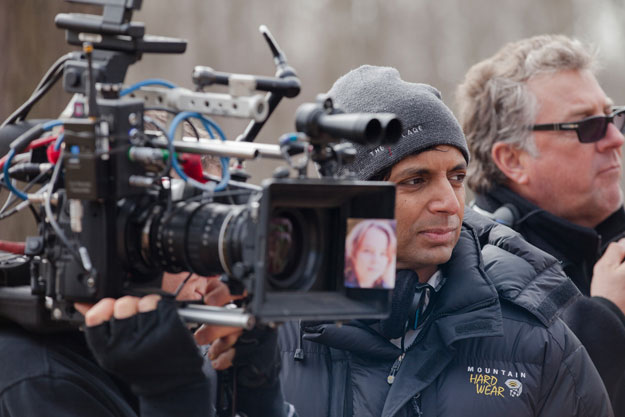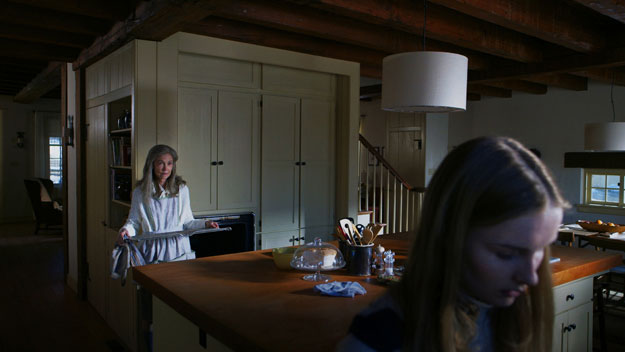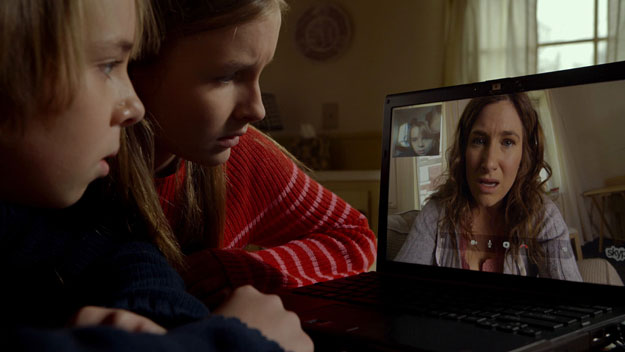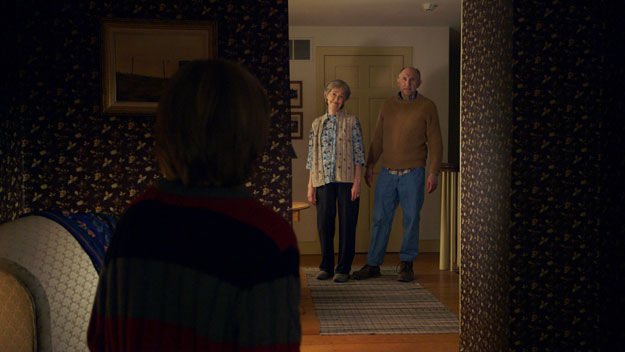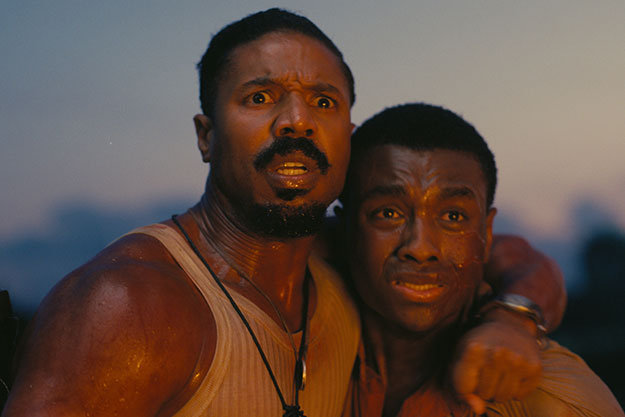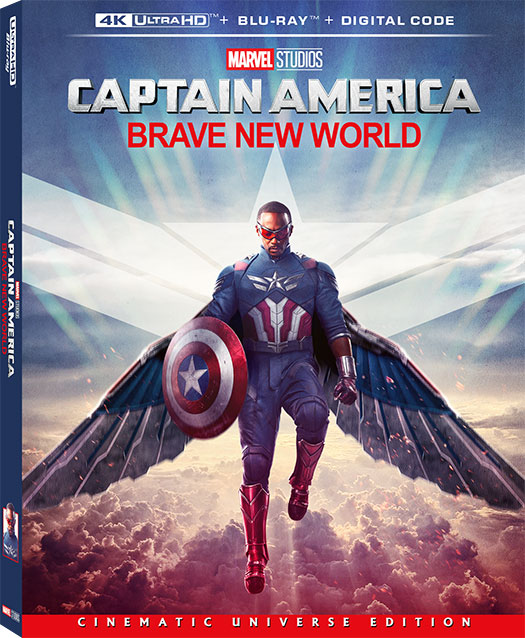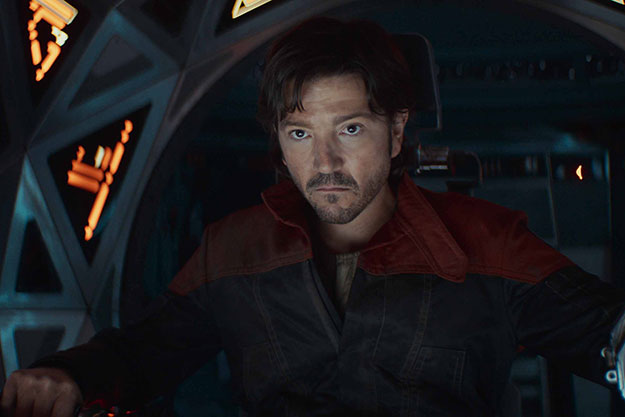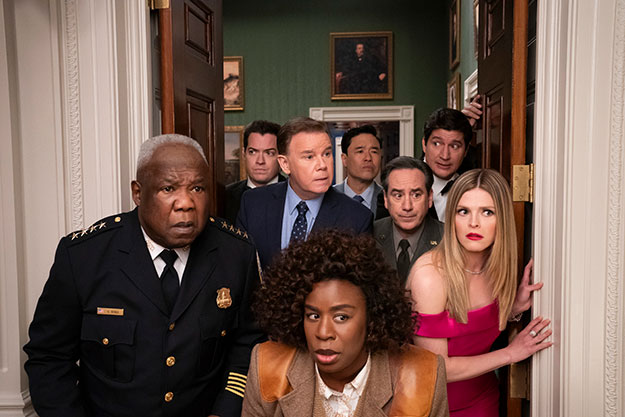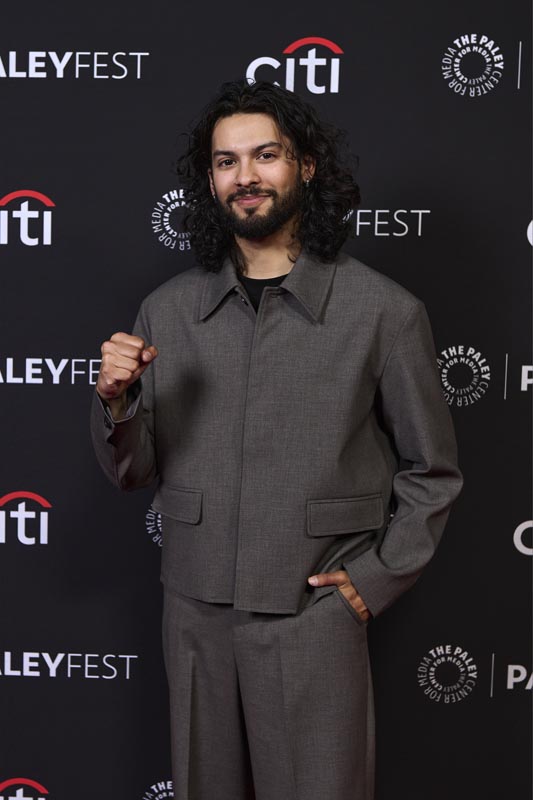Unique Mix of Screams and Laughs in M. Night Shyamalan’s ‘The Visit’
The Visit marks M. Night Shyamalan’s cinematic return to tense thrillers. In the film, Becca (Olivia DeJonge) and younger brother Tyler (Ed Oxenbould) say goodbye to their mother as they board a train and head deep into Pennsylvania farm country to meet their maternal grandparents for the first time. While everything appears to be comfy and cozy, when night falls, strange things happen to their Nana (Deanna Dunagan) and Pop Pop (Peter McRobbie), and they discover a terrifying secret that may end up killing them.
We got a chance to catch up with director M. Night Shyamalan in Beverly Hills to talk about his latest endeavor ...The Visit.
Entertainment Affair: So what inspired you to make this film? Did you have a fear of old people?
M. Night Shyamalan: When I am writing about something, I’m thinking about what is the subject of the piece. The subject of the piece is our fear of getting old, which is a variation of our fear of dying. I have to believe there is a primal thing that we are talking about even though we are doing it in a tongue in cheek manner. What is it that makes it scary, what is the psychology behind it. I just love psychology, “why we do things, what does the color red do, what is this?” all of that stuff. That is the primal thing of it, that we are scared of getting old. Playing on that is a powerful conceit.
EA: This film has a great sense of humor, so when I see an M. Night Shyamalan film, I don’t think of comedy, I think of horror. So was that intentional?
MNS: I did a TV show this past year, Wayward Pines, and it went well. And everybody wants me to make these TV shows, and I want to make Sex in the City. That’s what I really want to make, I want to make Sex in the City. But everybody is offering me sci-fi shows. Me in person, as a human being, I enjoyed this balance, like The Visit is the balance of who I am, mischievous of who I am. I had a couple of times where I wrote comedy, I wrote it in Stuart Little, it was a little more family oriented. In Signs there was some comedy, and occasionally I put it in some things, but I have been enjoying making people laugh, and I hope to have that as a wonderful thread in the movie. It’s a great foil.
EA: What was the conscious decision to go to do something different by working with Jason Blum (CEO of Blumhouse Productions)?
MNS: I’m always a philosophical guy. Each movie is a new relationship. It really is. You have to start fresh, I can’t just go “last day went really well/it didn’t go really well. So I was really funny on that last day, so I am going to tell some really great jokes, so on this day she’s going to love me,” that’s a terrible way to start a relationship. Or: “My last girlfriend she was always on my case, I just can’t believe you said that to me,” that’s a terrible way. Each relationship is brand new. But I do feel like, the best way – and I tell this to my kids – whenever I meet a human being who is comfortable with themselves, their flaws, their arrogance, their love, their vulnerabilities, their fragility, their just comfortable with themselves, the totality of it all, they’re so amazing to be around. They are so attractive to you. They may not be the most beautiful, they may not be the most smart, but they are most comfortable with themselves of who they are, they are really okay with themselves, it is like a light. That’s true for artists as well.
EA: The pairing of you two is a creative match made in heaven, and I hope you guys get to work together again. Can you tell us what most surprised you about working with each other for the first time?
MNS: Well we got over the whole awkwardness because we had sex twice. We got over that. Here’s the thing about Jason, he’s like the perfect foil for me, because he’s super inspirable. So if I am next to a partner, and I know there is business, and I know this is about art and commerce, and that is always tough for everybody. It’s just so hard, we are selling art, it’s just hard. I get it. You can go over here and say “I’m the artist,” and you can go way over here, and “I’m selling out,” but it’s hard. To have a partner that’s advising me on the business side, but all he cares about is being inspired, that makes me feel safe. I know he won’t betray the individuality of the movie, because that’s all he cares about.
EA: Tell us about finding your young actors and the excitement in seeing what they were able to do in parts of the film.
MNS: Partly I can’t get too much credit for what they did. Just being very, very lucky. Making movies is an act of faith. When I write these characters, I just pray these individuals exist in the world. I am not looking for a 12-year-old Daniel Day Lewis, who transforms from one role to the next. That’s not who I am looking for. I am looking for these kids to exist somewhere. That’s who they are in real life, and they will do a variation on that.
EA: I noticed that two of the main actors in the cast have had a lot of theater experience, was that your intention or did that happen on accident?
MNS: Someone asked me how would I describe my movies, so I said someone taking B-genre movies and turning them into A-genres. Get the cinematographers and actors to do A-genres about aliens or ghosts or crazy people or killers. My directing style is long takes, especially in this. The longer take I can do, the more I can think about not doing it in cuts, the better.
EA: What was the first image to hit you from the movie?
MNS: I believe it was probably Grandma in the rocking chair facing the wall. It’s actually from an Andrew Wyatt sketch… he’s an artist who actually lived near me, and it’s a sketch that he did of this old couple. It’s beautiful. It’s like a study of this old woman with a rag around her head and she’s just staring at the wall. She was just thinking. And I thought this was the scariest thing ever. I took it and I Xeroxed it, and I said, ‘This is what we’re making.’ I kept that with a two-line summary of the movie, and that’s what I had first, this old lady on a farm just staring at the wall in a rocking chair.
EA: Now knowing that you love art, did you take inspiration from Grant Wood’s painting “American Gothic” for the grandparents look?
MNS: Yes!
EA: How did you manage to do your thrill/horror scenes and bring a new aspect of you as a director in this movie by making comedy scenes so purely funny?
MNS: There’s this tone of what we’ll call dark humor, but what it is about something that, do the emotion has to be separate. Does fear and comedy, emotion and fear, emotion and laughter, do they have to be separate can they co-exist.
EA: Your right, they feel separate. It’s pure horror and pure comedy. I think you just created a new genre ...like “Ho-Com” cause it is not a “dark comedy” when you get to think of it. How did you achieve this?
MNS: There is something that they work against each other really beautifully, it’s a comment on the same subject, right? It’s the fear of dying, fear of getting old, one is laughing at it and one is being scared of it but they're both valid comments on the same painting, on the same subject. That’s why their valid, having two organic reactions of the same subject.
Don’t miss The Visit when it opens in theaters Friday, September 11.






